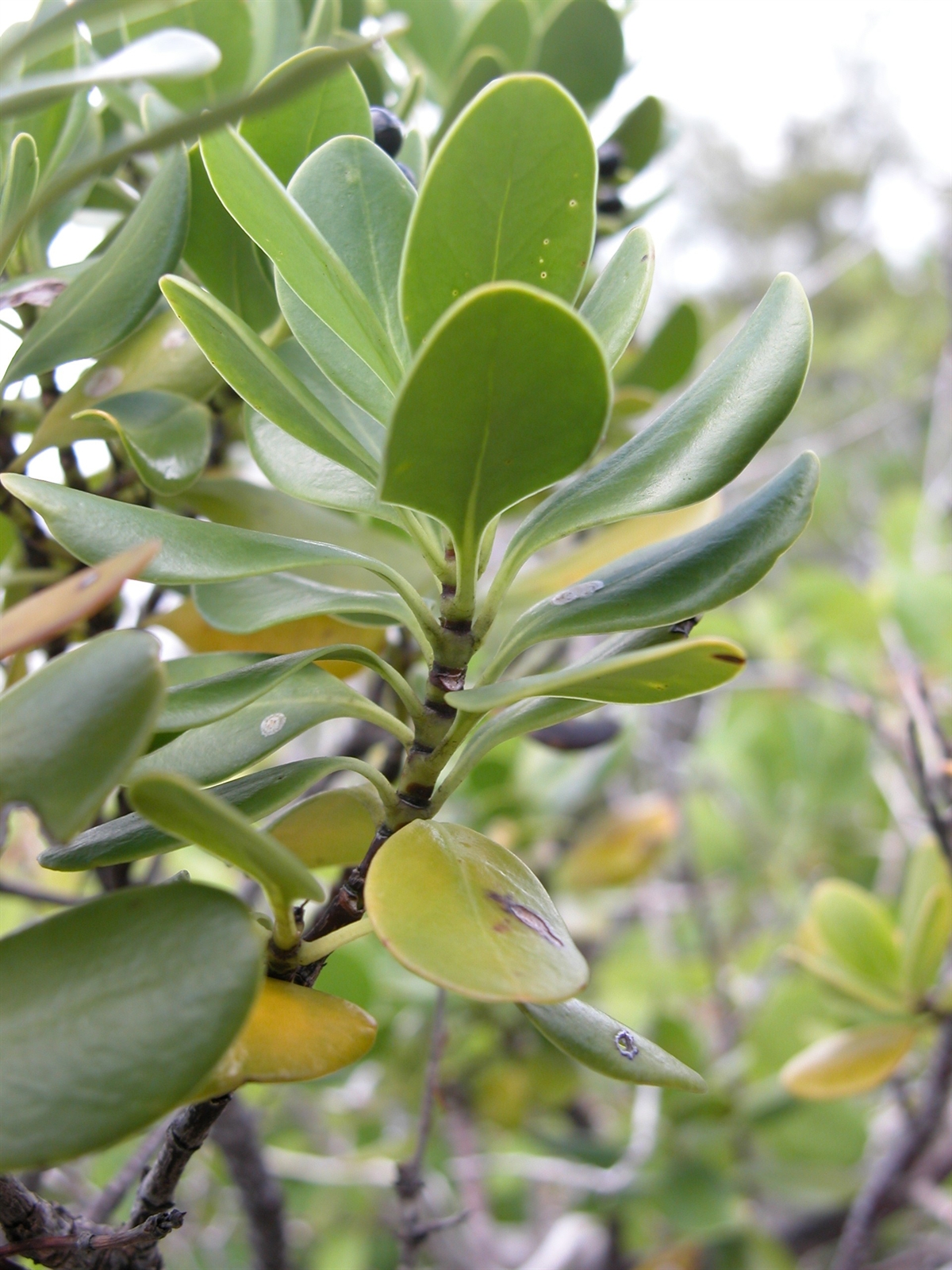Habit: Erithalis fruticosa grows as a medium shrub to small tree up to 5 m in height (typically 1-2 m). The leaves are arranged oppositely with paired stipules at the petiole base. The leaves are to 10 cm in length, obovate to oblanceolate with an entire margin and a round to acute leaf apex. The leaves are primarily occurring at branch tips.
The complete, perfect, actinomorphic flowers are arranged in panicles. There are 5 partially fused greenish sepals in the calyx. There are 5 partially fused white petals in the corolla. There are 5 stamens. The ovary is inferior with a single locule containing many ovules. The fruit is a berry that turns white to red to dark purple/black at maturity.
Habitat: Erithalis fruticosa grows primarily in coastal Dry Broadleaf Evergreen Formation –Shrublands (scrublands) on sand substrate but also at the edges and interiors of DBEF – Forests and Woodlands on limestone substrates.
Distribution: Erithalis fruticosa occurs on all island groups in the Lucayan Archipelago as well as Florida, the Caribbean region, and Central and South America.
Medicinal/Cultural/Economic usage: Erithalis fruticosa teas made from combining all parts of the plant have been used to treat hemorrhoids, measles, and as a diuretic.
It has been traditionally used as a torch for hunting land crabs. The wood is broken and shredded and then lit on fire. It produces a smoky fire.
Erithalis fruticosa is now used in the horticultural industry, is a good attractor of birds and butterflies, and does well in coastal, salty, dry conditions.




